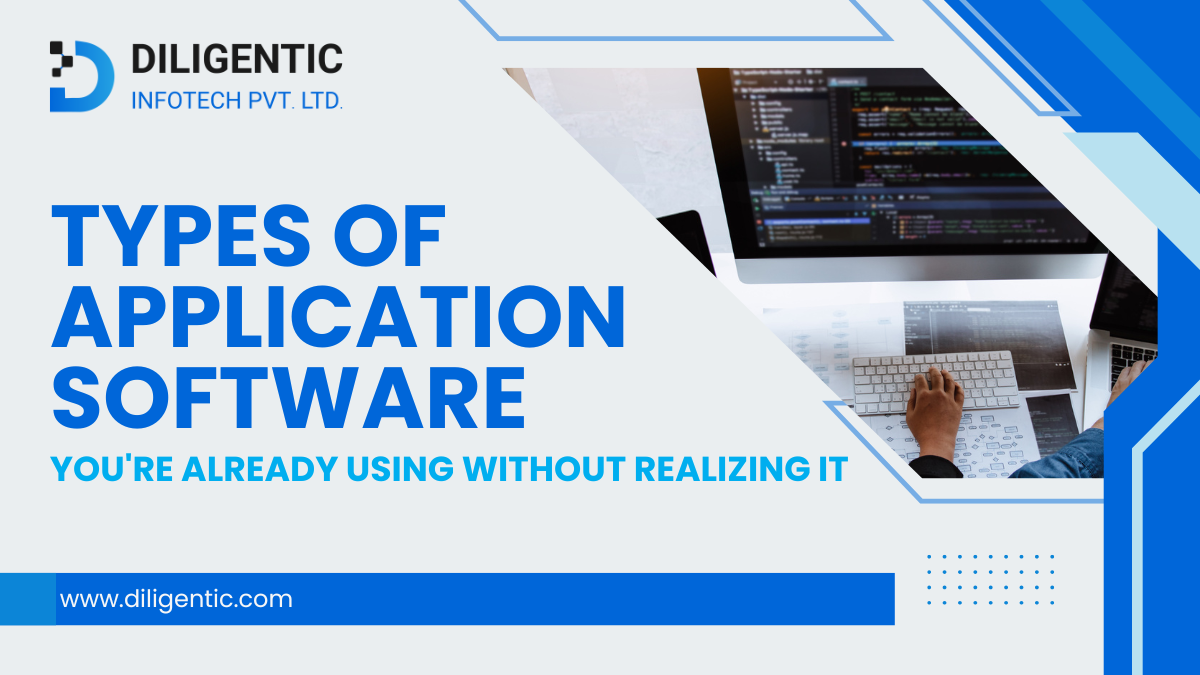SHARE

Types of Application Software You’re Already Using Without Realizing It

You’re likely using various types of application software every day without even noticing. From writing emails to watching videos or planning meetings, these tools make our personal and work lives easier. This article explains what is application software and how it’s different from system software and highlights different types of application software with examples and trending use cases.
Table of Contents
What is application software?

Application software consists of programs created to help users carry out particular tasks or functions. These include writing documents, editing photos, browsing the internet, managing emails, and more. Unlike system software, application software focuses on solving user needs rather than operating the computer itself.
For example, when you open Excel to manage your budget or use WhatsApp to chat, you’re directly interacting with application software.
What is system software and application software?
To understand this better, let’s break it down:
- System software forms the foundation of a computer’s operations, working behind the scenes to control hardware, manage memory, and handle essential system functions. Examples include Windows, Linux, device drivers, and BIOS.
- Application software, on the other hand, runs on top of the system software and is what users engage with directly to perform specific tasks such as sending emails, creating games, or browsing the internet.
Both work together: you can’t run an app without the system software, but the system software alone won’t help you write an essay or join a Zoom call.
What is the Difference Between Application Software and System Software?
Here’s a simple comparison table to make the distinction clear:
| Feature | System Software | Application Software |
|---|---|---|
| Purpose | Runs and manages hardware and system operations | Helps users complete specific personal or work tasks |
| User Interaction | Mostly works in the background | Actively used by users through a visual interface |
| Dependency | Runs independently | Depends on system software to operate |
| Examples | Operating systems, drivers, system utilities | MS Word, Chrome, Photoshop, Spotify, WhatsApp |
| Programming Level | Low-level programming (e.g., C, Assembly) | High-level programming (e.g., JavaScript, Python) |
Different Types of Application Software

Now, let’s look at the different types of application software you’re probably using already, some without even realizing it.
You likely use various types of application software daily, often without even realizing it. These programs are created to perform specific functions, such as creating documents, organizing team workflows, or streaming videos. Here’s a breakdown of the main types of application software, along with examples and simple explanations.
1. Word Processing Software
This type of application software is used to create and edit text documents. You use it when writing resumes, preparing reports, or drafting blog posts.
Examples: Microsoft Word, Google Docs, and WPS Office.
These tools allow you to format text, insert images, use spell check, and export documents in different formats like PDF or DOCX. It’s one of the most commonly used application software in both education and professional settings.
2. Spreadsheet Software
Spreadsheet software helps you organize data into rows and columns and perform calculations, analysis, or data visualization.
Examples: Microsoft Excel, Google Sheets, and Zoho Sheets.
You might use this for budgeting, financial forecasting, inventory tracking, or simple to-do lists. With built-in formulas and chart tools, it’s essential for data-heavy work.
3. Presentation Software
This application software is used to create slide-based visual presentations, typically for meetings, webinars, or educational purposes.
Examples: Microsoft PowerPoint, Google Slides, and Prezi.
Whether you’re pitching an idea to clients or presenting school projects, this software offers templates, animations, and multimedia support to make your message engaging and clear.
4. Web Browsers
Web browsers are software tools that enable users to explore and interact with websites and online applications.
Examples: Google Chrome, Mozilla Firefox, Safari, Microsoft Edge.
Whenever you look something up online or open a website, you’re using a web browser. It functions as a connection point between your device and the internet, making it a crucial tool for everyday digital use.
5. Email Clients
These are used to send, receive, and manage email communications. Many also offer calendars, task lists, and contact management.
Examples: Microsoft Outlook, Gmail (web-based), and Thunderbird.
Whether you’re checking your work email or managing personal communication, email clients are one of the most-used types of application software.
6. Multimedia Software
Multimedia application software helps in playing, editing, or creating audio, video, and image files.
Examples: VLC Media Player, Adobe Photoshop, Windows Media Player, Spotify.
If you’re watching YouTube videos, listening to a podcast, or editing vacation photos, you’re using multimedia apps. Some are built for entertainment, while others serve professional content creators.
7. Database Management Software
This type helps store, manage, and retrieve structured data. It’s commonly used in large organizations to handle huge amounts of data securely and efficiently.
Examples: MySQL, Microsoft Access, Oracle Database.
Though you may not interact with these directly, apps like booking platforms, banking apps, or e-commerce sites all run on top of such systems.
8. Communication Tools
Used for messaging, voice calls, video conferencing, and team collaboration, this software keeps people connected remotely.
Examples: Zoom, Slack, Microsoft Teams, Skype.
Whether it’s a team meeting or a quick update, communication tools are essential in modern workplaces. These tools also integrate with calendars, file sharing, and task management platforms.
9. Project Management Software
These applications are created to assist with project planning, execution, and monitoring. They organize work into individual tasks, assign roles and responsibilities, and keep track of deadlines.
Examples: Trello, Asana, Notion, ClickUp.
You don’t need to manage huge teams to use this; many freelancers, students, and startups rely on them to stay organized and productive.
10. Educational Software
These apps support learning and skill-building. They may include virtual classrooms, e-learning platforms, or subject-specific practice tools.
Examples: Duolingo, Google Classroom, and Coursera.
Whether you’re learning a language or taking an online certification course, educational software is designed to make learning easier and accessible from anywhere.
11. Utility Software (User-Facing)
While often grouped with system software, some utility tools are also considered user-focused applications, especially those that offer simple interfaces.
Examples: File compressors (WinRAR), antivirus apps (Avast), and disk cleaners (CCleaner).
These tools support your device by improving speed, security, and storage, all while being easy enough for any user to operate.
12. Custom-built or Industry-Specific Software
These are custom-made applications built for specific business or organizational needs.
Examples: Hospital management systems, point of sale (POS) software, and school ERPs.
Some types of application software aren’t commonly used by the general public, but they’re essential in fields like education, healthcare, retail, and manufacturing.
Real-World Examples You Use Every Day
You may not think about it, but these apps are part of your daily life:
- Writing assignments (Word or Docs)? That’s application software.
- Watching videos (YouTube or Netflix)? That’s application software.
- Booking appointments (via browser)? Still application software.
- Messaging your team (Slack)? Yes, application software again.
That’s the beauty of it: you’re using multiple types of application software even if you don’t realize it.
Trending Features in Application Software

Let’s look at some features modern users expect from application software:
1. Cloud Integration
Most apps now offer cloud storage, meaning your files are saved online and accessible from any device. Google Workspace and Microsoft 365 are top examples.
2. Artificial Intelligence
Many applications now come with AI features like grammar suggestions, auto-scheduling, facial recognition, and smart sorting.
3. Cross-Platform Access
Apps are no longer limited to one device. Tools like Spotify, Zoom, and Notion work seamlessly across desktop, mobile, and tablet.
4. No-Code & Low-Code Tools
Apps like Notion, Airtable, and Bubble allow users to create internal tools or workflows without coding knowledge, gaining rapid popularity.
Why It Matters to Know This
- Efficiency: Using the right software saves time.
- Security: Knowing what data each app accesses helps protect your privacy.
- Smart Choices: It lets you pick apps that solve your problem.
- Job Skills: Most jobs require knowing how to use these tools well.
Want to know more about what goes into app development costs? Check out our in-depth guide on how much it costs to create an app.
Conclusion: Let’s Build Smarter Tools Together
You’re surrounded by types of application software or What is application software?, from communication tools to creative design platforms. Knowing how they work helps you become a smarter user and make better software choices.
Whether you’re a small business or enterprise team looking for custom app development, Diligentic Infotech can help you build or choose the right application software to meet your unique goals.
👉 Let’s talk about how the right software can change the way you work.
FAQs
What is application software used for?
It helps users perform specific tasks like writing, designing, or browsing.
Can I use application software without system software?
No, application software needs system software to function.
Do mobile apps count as application software?
Yes, mobile apps are a form of application software for smartphones.
Why do businesses use custom application software?
To meet specific workflows or industry-related needs efficiently.
Do I need to install application software to use it?
Not always, some application software runs directly on the web without installation.
How is application software updated?
Updates are usually provided by developers and installed manually or automatically.
Engage with our experts
Subscribe to our newsletter!
Be the first to get exclusive offers and the latest news.
Posted on 5 Dec 2025
Why Super Apps Are Becoming the Next Big Shift in Mobile Tech in 2026
Super Apps are the next big shift in mobile tech because users prefer a single place for services rather than juggling dozens of apps. Brands want lower acquisition costs and stronger retention. Advances in AI, payments, authentication, and mini-app frameworks make it easier for a single platform to host multiple services.
Posted on 15 Nov 2025
Best Mobile App Development Company in Calgary | Build Powerful Apps That Perform
If you’re looking for a top-tier mobile app development company in Calgary to build a powerful, high-performing app, you need a partner that offers full stacks of mobile app development services, understands the Canadian market, and is comfortable with custom mobile app development company workflows.
Posted on 21 Oct 2025
Android App Bundle: 10 Compelling Reasons Every Business Should Choose It
When a company decides to build an Android app, an early strategic decision is how to package and publish it. For years, developers used APK (Android Package Kit). But Google introduced the Android App Bundle format and, over time, made it the required format on Google Play.

Reach out
Let’s Start Together
We're a collective of high caliber designers, developers, creators, and geniuses. We thrive off bouncing your ideas and opinions with our experience to create meaningful digital products and outcomes for your business.
Phone Number
+1 (825) 760 1797
hello[at]diligentic[dot]com
